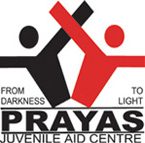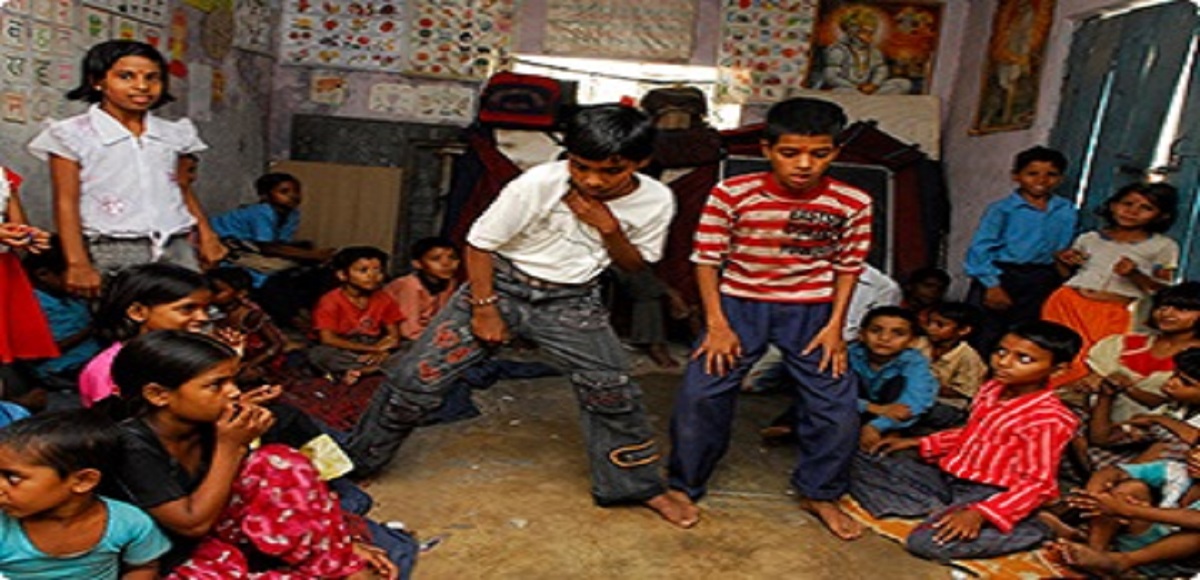Drop-in-Centre Delhi
Drop-in-Centres (Prayas initiative) Need for ‘Children in need of Care & Protection’: Nabi Karim/Lahori Gate Case-study Nabi Karim Drop-in-Centre, from where three school-going, well dressed, well fed and properly looked after homeless children, This Prayas run Drop-in-Centre, apparently supervised by the Joint Apex Committee of the Slum and Re-settlement Wing of Municipal Corporation of Delhi, was created as one of the many shelters for the homeless people, including children, in a major programme initiated by Amod K. Kanth, (former DGP) founder Secretary, Prayas during his Action-based Study leave to ascertain, assess and find solutions to the problems of the thousands of homeless people of Delhi, against which, at the beginning of the campaign only 1400-2000 could be provided in Delhi’s Raen Baseras (Night Shelters). Incidentally, since there was not a single Raen Basera in Delhi for children and women, practically under a legal and moral compulsion, some Drop-in-Centres, including Nabi Karim’s, was set-up by MCD with the assistance of 09 NGOs including Prayas during 2002-04. Nabi Karim, in the heart of Delhi’s congested walled-city, happens to be a den of criminality, drugs, alcoholics, leapers, beggars, knifers and commercial sex workers, among whom couple of thousand languishing children were found drifting towards silent death. This situation created the necessity to set-up a Drop-in-Centre, i.e., a place where children could come and go at will, along with another shelter for the homeless run by a sister NGO Ashray Adhikar Abhiyan (AAA), a project of Action Aid India. Existing Scenario An estimated 50,000 plus children are exposed to the vagaries of stark poverty, marginalization and an uncertain future in India’s most affluent City-State of Delhi itself, the national figures being quoted as 35 million by the Ministry of Women and Child Development. We have to find out what are the options before the State, the NGOs and the community? Clearly, developing institutions to provide custodial and residential care strictly in accordance with the law, at best, amounts to be an unattainable dream – a dream which even developed countries find it impossible to put into practice. The second option comprises involving NGOs to take-up this onerous task. Here again, with their built-in limitations of finances, resources, lack of expertise and managerial know-how and shortage of committed manpower, it is totally unrealistic to expect NGOs to meet this challenge in any holistic and effective manner. Very few resourceful people and organizations, including the corporate sector, are prepared to soil their hands with this most difficult programmes relating to such children. However, the fact remains that, being people’s own / civil society organizations, NGOs can and do develop programmes that can partly mitigate the challenges posed by this needy population, particularly the children in need of care and protection. The need of the hour, therefore, is to strengthen NGOs with financial, managerial and human inputs so that they are encouraged to do justice to meet this problem and increasingly involve the wider community by sensitizing local leaders. Again, in the context of children, it is NGOs who hold the key to develop the legally required ‘fit persons and fit institutions’ that can slowly but surely tackle this huge problem of neglected children and their care. Prayas, which extends to 10 States and UTs of India accessing nearly 50,000 children with programmes of shelter, education, health, nutrition, vocational training, recreation, etc., while exercising the second option, provides the most comprehensive and largest network of services for the destitute children in the city of Delhi. The third option comprises involving the wider community. To do this, it is vital that the government, NGOs and the media put up a joint front whereby the common man is willing to come forward and lend a helping hand. It is immaterial whether this helping hand comes forth in the form of NGO programmes or through social reintegration legal processes of adoption, foster care and sponsorship. In India, we are fortunate to have a large number of people with charitable leanings and humanitarian outlook – people, as individuals and as organized groups or NGOs, can be groomed to function as suitable persons / organizations to undertake this role. They are not only expected to lovingly accept these neglected children but to also give them care which may qualify them as being ‘appropriate’. The Concept of Drop-in-Centre In its existing form, a Drop-in-Centre is essentially a ‘Contact or Facilitation Centre’ wherein a child may seek assistance in the form of care, protection and other support services including a temporary abode, where he feels protected from an exploitative environment. Such a Centre essentially operates for those children who are defined as ‘children in need of care and protection’ under Juvenile Justice (Care and Protection of Children) Act, 2000. Here they may also participate in a supportive environment having limited programmes and activities that helps them to look to the future with hope. In such a centre, a child may walk in to avail of humane services and walk out at his will. During the stay at such a Centre, the child is entitled to avail the Centre’s service as a matter of right. All along, however, the child has the freedom to leave the Centre to seek shelter at home, any other safe place or a legally constituted institution. As per the Juvenile Justice (Care and Protection of Children) Rules 2002 of Government of NCT Delhi, Section 31(7), ‘a juvenile or child can be brought to the shelter home (or Drop-in-Centre) for short period of stay till his production before the Board or Committee as the case may be, for suitable direction’. However, for all practical purposes, the ‘children in need of care and protection’ are produced before the Child Welfare Committee by police, CHILDLINE or any other public functionary or recognized voluntary organization. The child never voluntarily appears before a Committee apprehending that he /she shall be immediately transferred to the bondage (almost captivity) of a Government Home, where he / she would not like to go. Under the law, UNCRC provisions and the Constitutional Rights no child can be compelled against his will to stay at a place except his / her own family or through a legal process. A Drop-in-Centre fully recognizes the child’s basic right to freedom while attempting to cater to his / her basic needs of childhood. Given the understanding of gap in child protection services in the NCT of Delhi, especially vis-à-vis the huge numbers requiring such services, one finds it shocking to realize that services for such children (both governmental and non governmental), are barely enough to cover 3000 children as against 50,000 children in need. This is not to under play the need of minimum standards of care and protection of services. The situation clearly calls for the development of alternative system of care and protection of children that synthesizes both a legal approach with child’s rights and the humanitarian orientation to provide a better future. UNCRC also emphasizes social re-integration of such needy children to the extent possible without resorting to legal proceedings. In short, the emphasis is on developing a child friendly Drop-in-Centre, with basic support services to meet the development needs of children during the stay at the centre. Drop-in-Centre in a way cannot be equated with the status of Shelter Home as outlined in the Juvenile Justice (Care and Protection of Children) Act and its Rules as it requires specific physical infrastructure, manpower, legal and administrative support etc. There are hundreds of such Drop-in-Centres being run in different parts of country by voluntary organizations and individuals, often with the support of various governmental departments. For instance, most of the 74 cities wherein Childline services run by the Ministry of Women and Child Development operates are required to have some kind of Shelter or Drop-in-Centres to accommodate children who are brought into this service. Majority of these cities does not have either the institutions run by the Government or any Children’ Homes and Shelters run by NGOs. They also do not have the legally constituted Child Welfare Committees. Consequently, these children in extreme distress and, often in destitution have to be kept at such Drop-in-Centres run by charitable and socially spirited individuals and groups. Similarly, there are hundreds of such Centres now being run all over the country, many by the Railway Police and RPF besides many public servants who are not able to create Government or NGO run Homes and Shelters under the Juvenile Justice (Care and Protection of Children) Act, 2000. In the absence of such informal Shelters and Drop-in-Centres the entire child care system is likely to collapse.Prayas ImpactReal Impact, Measurable Results
270
fundraising & donation campaign
89
of beneficiaries have increased coping skills
93
of beneficiaries saw an increased income or educational level
83
increased community needs
It’s not just a donation, it’s an
investment in a children’s future…
Support by volunteering
Become a Volunteer
